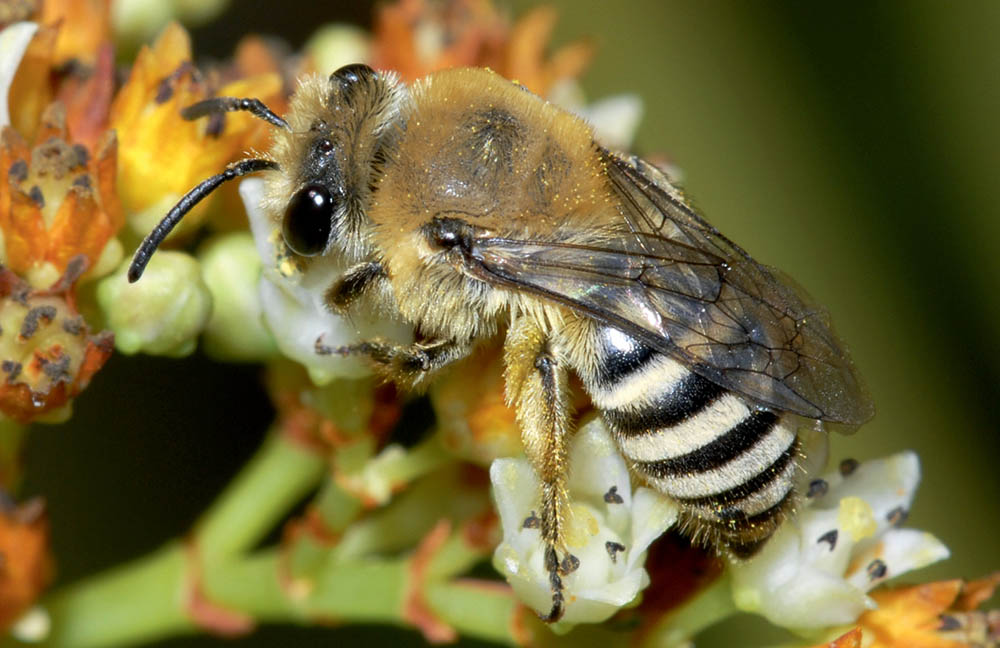
Polyester bee (genus Colletes)
Globally, bees are grouped into seven families. Six of these have species in North America, though only five families are common: Colletidae, Andrenidae, Halictidae, Megachilidae, and Apidae. The sixth family, Melittidae, is represented by only 60 or so generally uncommon species in North America. (The seventh family, Stenotritidae, is found only in Australia.) A short summary of the six North American families is included here.
Bees in the family Colletidae are varied in appearance and have few common features. One feature consistent to all colletid bees is that their tongues have a two-lobed tip. Colletids secrete a cellophane-like substance (hence their common name) with which they line their brood cells. They apparently use the two-lobed tip of their tongues like a paintbrush to spread this lining. The lining is strong enough that it may be separated from the soil and the entire brood cell removed. It is sufficiently waterproof that it allows ground-nesting colletids to nest in areas that flood, such as stream banks.
The Colletidae can be found on all continents except Antarctica. The two common genera in North America are Colletes and Hylaeus; both are included in this guide.

Polyester bee (genus Colletes)
With more than 1,400 species in North America (more than a third of the continent’s bee diversity), Andrenidae is the most diverse family of bees on the continent. Although more than a dozen genera from this family can be found in North America, much of this diversity is due to two massive genera, Andrena and Perdita, which include more than 400 and 600 species, respectively. Andrenidae are abundant in the spring, especially in dry temperate regions, and are among the first bees to emerge in late winter.
All andrenids excavate nests in the ground, giving them their common name of mining bees. They generally nest in flat or gently sloping sites and may form aggregations with tens of thousands of bees nesting in a small area.
The huge majority of species in this family are solitary. A small number of species are communal, with several females sharing a nest entrance but each excavating and provisioning their own brood cells. Bees in the genus Perdita do not line their brood cells. All the other species do, though the lining soaks into the soil (unlike the Colletidae). This family is unusual because it does not include any cleptoparasitic species. (Cleptoparasites do not make their own nest, but lay eggs in the nests of other species.)
The three andrenid genera in this guide are Andrena, Perdita, and Protoxaea.
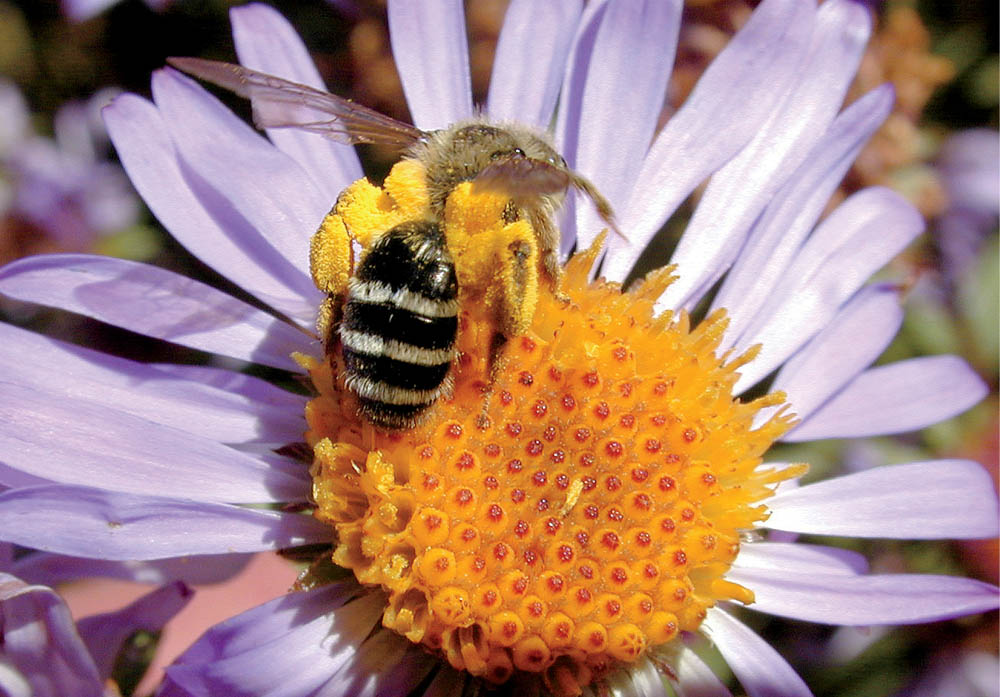
Mining bees (genus Andrena) often carry pollen high on the rear legs and the rear of the thorax.
Halictidae are probably the most frequently encountered bees during summer. Although this family includes most of the brightly colored metallic bees, the majority of halictids are drably colored and small. Since they don’t fit the widely accepted image of a bee, they are generally overlooked.
The nesting behaviors of the Halictidae vary greatly. Most excavate nests in the ground, though some create them in rotting wood. The genus Lasioglossum includes the whole gamut of social behaviors from solitary (each female constructs her own nest) to semisocial (nests are constructed by a group of bees in which one is the egg-laying queen). Some Agapostemon are communal; a dozen or more females may share a nest entrance, but underground each bee creates her own brood cells. Species in the genus Sphecodes are all cleptoparasites, mainly in the nests of other halictids, but occasionally in nests of Andrena or Perdita bees.
The halictid genera in this guide are Nomia, Dieunomia, Agapostemon, Halictus, Lasioglossum, Sphecodes, and Augochlora.
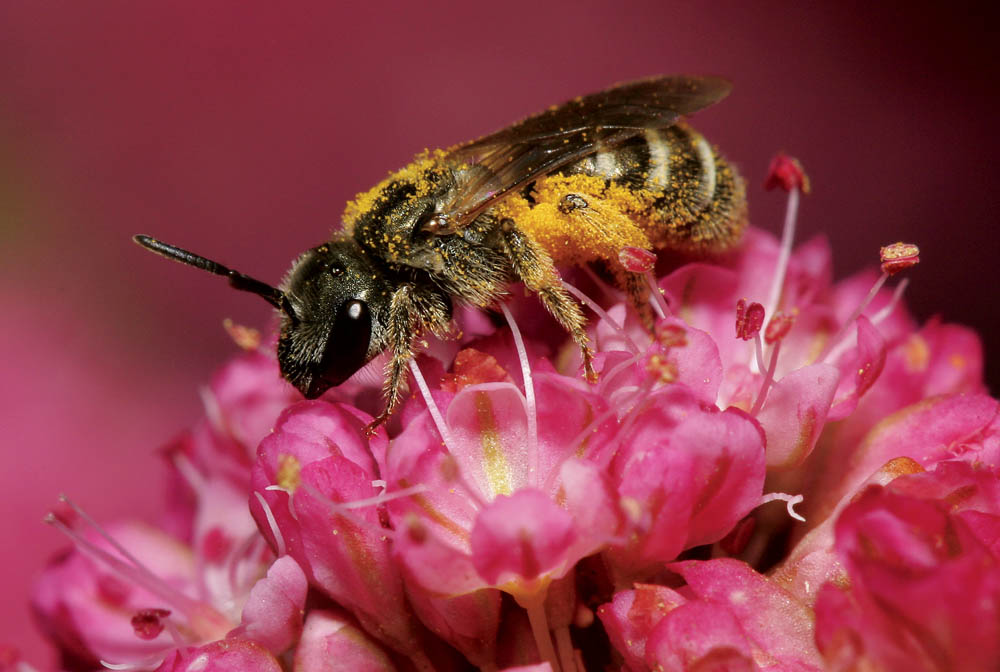
Sweat bees typically appear dark and drab, but they are among the most abundant bees during summer.
The Melittidae is a small family of bees found only in temperate regions of the Northern Hemisphere. In North America, there are only three genera: Hesperapis, Macropis, and Melitta. Of these, Hesperapis is the most common, but found only in the Southwest; the other two are rare. They share few characteristics to aid in identifying them. The most obvious feature is the pollen brush (scopa) on the hind legs; it extends farther down the leg than in other bees.
All melittids are solitary bees and nest in the ground, and they typically leave the brood cells unlined. Macropis is the exception; it collects oils from yellow loosestrife (Lysimachia) with which it lines the cells. It also mixes the oil with Lysimachia pollen to provision the cells.
Since these bees are generally rare, this guide does not include any melittid genera.
The Megachilidae is one of the easiest families to recognize because its members don’t carry pollen on their legs. Instead, they have rows of stiff hairs on the underside of their abdomens into which they pack dry pollen for transporting back to the nest. Many also have a wide head because of the strong jaws that they used to gather nesting materials.
The great majority of megachilid bees nest in existing cavities above ground (beetle tunnels in snags, crevices in rocks) and collect items such as leaf pieces, chewed up petals, or wet soil to divide the nesting tunnel into brood cells. Common names of megachilid bees reflect these nesting habits: leafcutter bees, mason bees, and carder bees are in this family. They are generally well-known bees because they will occupy nest blocks and are managed for pollination on farms and in backyards.
The Megachilidae genera in this guide are Hoplitis, Chelostoma, Osmia, Anthidium, Stelis, Coelioxys, and Megachile.
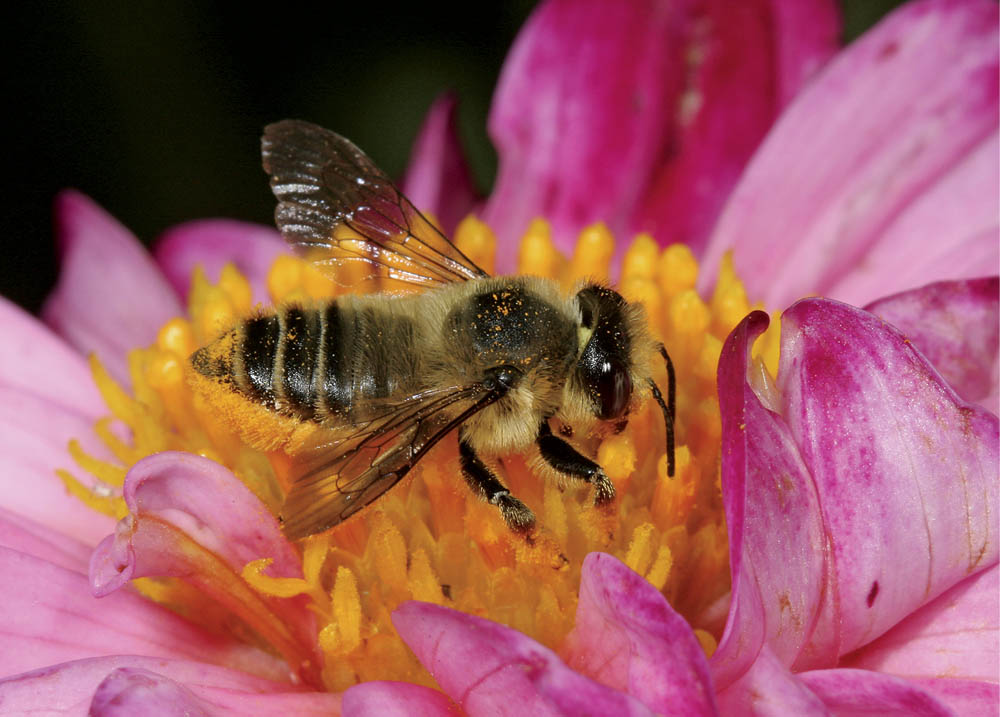
The abdomen of many leaf-cutter bees ends in a blunt tip.
The Apidae is an immensely diverse family that includes the best-known bees (carpenter, bumble, and honey bees) as well as a wide range of less well-known yet frequently encountered groups such as the digger, squash, long-horned, and sunflower bees. Given the diversity of its genera, it will come as no surprise that species in this family display the full range of nesting behaviors from solitary to social, nest in the ground and in wood, occupy existing cavities or excavate new ones, and include cleptoparasitic species.
This guide includes the following Apidae genera: Xylocopa, Ceratina, Nomada, Exomalopsis, Diadasia, Eucera, Melissodes, Peponapis, Svastra, Anthophora, Centris, Habropoda, Bombus, and Apis.
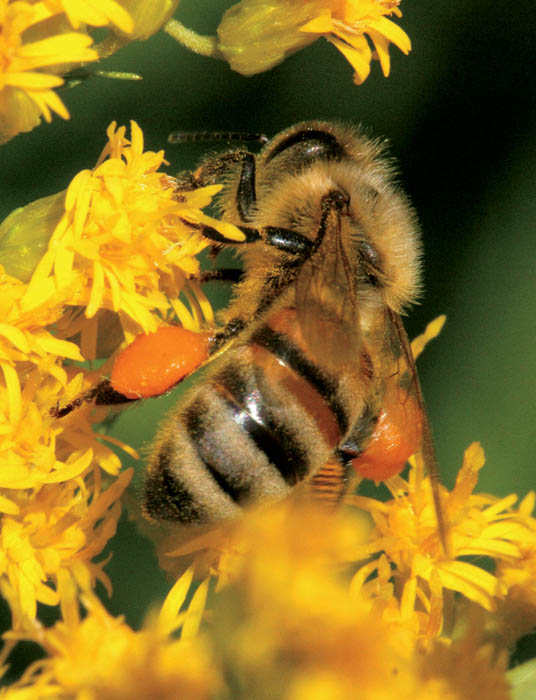
Honey bees carry pollen as a wet lump on their hind legs.